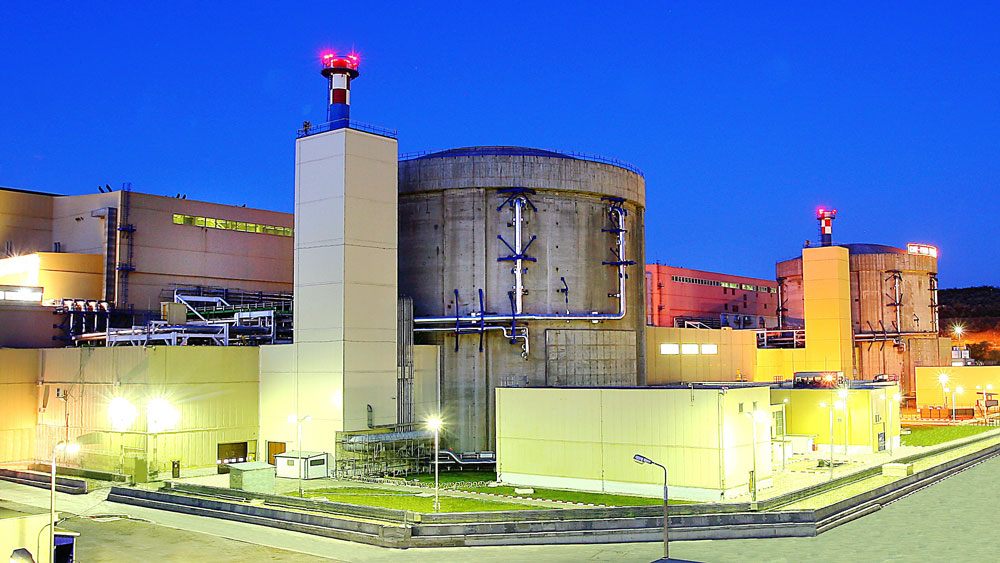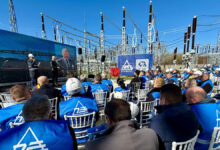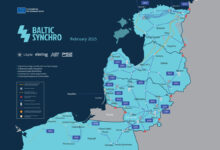Nuclearelectrica’s Management Plan for 2019-2022
Top priorities: Refurbishment of Unit 1 and construction of reactors 3 and 4
Consolidation of electricity production at Cernavoda NPP, while complying with nuclear security requirements, extension of the life cycle of Unit 1 reactor, continuing the project for the construction of Units 3 and 4, as well as diversification of uranium sources are the main pillars of the Management Plan of the National Company Nuclearelectrica for the period 2019-2022. Recently completed, the document is a working tool for company’s directors and managers.
The objectives proposed under the current management plan and measures for their implementation are based on the high performances obtained in the operation of Cernavoda Nuclear Power Plant (Cernavoda NPP), the natural reduction of the remaining lifetime of the 210,000 effective operating cycle established under the original project, as well as the production of fuel within company’s branch, Pitesti Nuclear Fuel Plant (FCN Pitesti). The management plan complies with corporate governance principles and is adapted to the primary purpose for which it was proposed, namely to achieve the assumed objectives.
Consolidation of production at Cernavoda NPP
Nuclearelectrica supplied in 2018, through Cernavoda NPP, 18% of the national electricity consumption, with a capacity factor of 92.37%, exceeding by far the level of 80% established according to the initial project. The intensive operation of the two reactors at Cernavoda NPP, while maintaining the level of excellence in operation, involves for the next four years the necessity of implementing compensatory measures to keep energy production at a stable level, with a minimum of shutdowns, while complying with nuclear safety rules, the quoted document mentions. For this, the company aims to ensure a physical production of at least 9.6 million MW, by implementing the annual investment programs necessary to ensure the operation of the power plant in compliance with the nuclear security rules, carrying out the preventive maintenance programs developed in order to implement the LTO concept for Cernavoda NPP, ensuring the human resources necessary for the operation of the power plant, completing the Post Fukushima program, maintaining radioactive emissions at the level of internal regulations, lower than the legal ones, and ensuring the necessary cash flows for the operation of the power plant.
Preparing lifetime extension
The components of the nuclear reactor of CANDU 600 power plants (as Unit 1) were designed for a lifetime of 210,000 hours of operation at rated output (Effective Full Power Hours), which translates into an operational duration of about 30 years at a capacity utilization rate of 80%, which will be reached at the end of 2023.
Over the past two years, due to the fact that several CANDU units are close to the limit of the 210,000 EFPH, the nuclear industry has made a number of research into the timing of the components of the reactor assembly and the aging mechanisms that affect them, in order to extend their lifetime beyond the limit estimated by the designer of the reactors – AECL (currently Candu Energy), with a result that could reach 245,000 EFPH for U1.
Updating the long-term strategy for DICA
The current strategy on assuring the intermediary storage of spent fuel provides for the possibility to continue the construction of MACSTOR 200 modules to the 14 modules inclusively, if the environmental permit is not obtained for MACSTOR 400 by 2020, after obtaining it following to move to the construction of these new modules. Currently, nine MACSTOR 200 modules are completed and modules 10 and 11 – also MACSTOR 200 – are under construction. Given the recent amendments to the environmental legislation and the request of the Ministry of Environment to link the documentations for DICA and CTRF, it is necessary to review the development strategy of intermediary storage facilities, moving to MACSTOR 400 starting with module 18, with completion provided for early 2027. In this context, the environmental permit and the construction permit for the modification of DICA project (switch to M400 and site extension) must be available no later than 2025. This means that the steps necessary for obtaining the environmental permit are no longer necessary before 2022.
Diversification of uranium sources
The Strategy for the diversification of sources of supply with raw material necessary to produce nuclear fuel was approved April 2018, strategy providing that SNN would purchase on the international market uranium octoxide – U3O8, following to be stored and processed by the National Uranium Company (CNU). To this end it is considered to qualify this year several manufacturers of natural technical uranium concentrate (CTU) necessary to produce nuclear fuel. Thus, CNCAN authorization will be obtained for the import of 3kg samples from the selected suppliers, which will be tested at the Nuclear Fuel Plant (FCN) in Pitesti.
Refurbishment of Unit 1 of Cernavoda NPP
In order to achieve this goal, a number of studies and support analyses will be carried out to reduce as much as possible the uncertainty margin. Evaluation of the status of structures, systems and components of the power plant – Condition Assessment – is the first and the most important study through which, based on information obtained from design, manufacturing, installation, history of operation and maintenance, as well as from the discussions with the operational staff (system engineers, components engineers, maintenance staff etc.) the evaluation of degradation mechanisms, aging management programs and financial evaluation of the proposed solution (repair, replacement, improvement) for all structures, systems and components of the power plant are made. The public procurement procedure for contracting this study was launched by SN Nuclearelectrica, estimating the signing of the contract in June 2019. Also, in order to prove the feasibility of the Refurbishment Project, in addition to the study on ‘Assessment of the status of structures, systems and components of the power plant’, it is envisaged to contract additional studies whose results will be included in the feasibility study.
Construction of Units 3 and 4
The revised strategy of continuing the Project of Units 3 and 4 of Cernavoda NPP by organizing an investor selection procedure provides for the creation of a joint venture company (JVCo) between SNN and China General Nuclear Power Corporation – CGN (selected investor), to which the value invested by SNN in EN subsidiary will be transferred. JVCo will be set up in order to re-check, under current conditions, the feasibility of the project, evaluate the assets and make the decision regarding the contracting of engineering, procurement and construction works (EPC), obtain the permits and approvals necessary for staring works, including regarding the support measures to be granted to the project, subject to national and Community legislation, and make the final investment decision.
Strengths, Weaknesses
The SWOT analysis carried out highlighted in the weaknesses chapter the dependence on unique suppliers for raw material (heavy water, technological water and uranium dioxide), low negotiating power with critical equipment/service providers, rigidity in the supply chain process of the legislative framework, discrimination against competitors in Europe, because of the restrictive legislation, but also the bureaucracy and non-optimized organizational structure of the company. The strengths chapter highlights operational stability and excellence, predictability of operating and maintenance costs, expertise in the nuclear energy industry and sales activities, and last but not least, highly qualified specialists.







